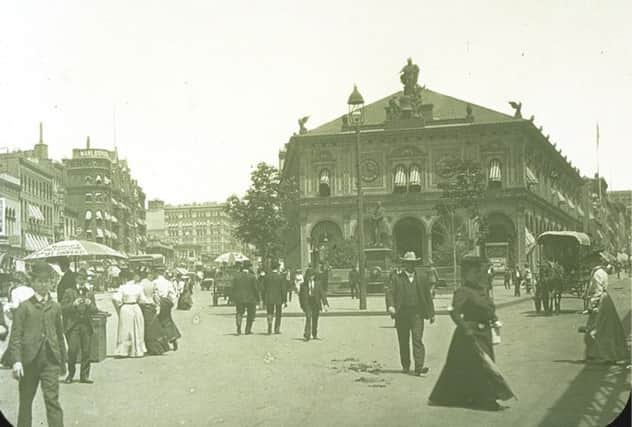Scottish Fact of the Week: New York Herald


Founded by James Gordon Bennett, born to a prosperous family in Banffshire, it became the most popular newspaper in the USA by 1845.
Before emigrating to the US, Bennett had entered the Catholic seminary in Aberdeen at the age of 15, staying there for four years.
Advertisement
Hide AdOn leaving, he travelled extensively throughout Scotland, and in 1819, aged 24, he and a friend set sail for North America.
After a four-week voyage, they landed in Nova Scotia, where Bennett worked as a schoolmaster as a way of making money.
From there he travelled to Portland, in Maine, where he again took up teaching in the village of Addison, arriving in Boston by the start of 1820.
He was employed as a proofreader and bookseller before the Charleston Courier hired him to translate Spanish news reports.
Arrival in New York and founding of New York Herald
Bennett moved to New York City in 1823, where he briefly worked as a freelance paper writer and then as assistant editor of the New York Courier and Enquirer.
He founded the New York Herald in May 1835, and it became the most popular - and profitable - daily newspaper in the United States in just 10 years.
Advertisement
Hide AdBy 1861, its circulation topped 84,000 copies, and it referred to itself as the ‘most largely circulated journal in the world’.
In Carl Sandburg’s book ‘Storm over the Land’, about the Civil War, Bennett Sr. is recorded as stating that a newspaper’s function was ‘not to instruct, but to startle’.
Advertisement
Hide AdDuring the war, the New York Herald lent its support to the Democratic Party, with Frederic Hudson - the ‘father of American journalism’ - serving as managing editor between 1846 and 1866.
He hired 63 correspondents to report on the conflict, and would send boats out to ships before they docked in order to get the news faster.
Hudson was regularly left in charge of the paper during Bennett’s travels, but after 20 years as managing editor, he took his wife, who was in ill-health, and his son Woodward to Concord in the state of Massachusetts, and James Gordon Bennett Jr. took over the running of the newspaper.
Search for Livingstone
It was the younger Bennett who took the decision to finance Henry Morton Stanley’s expeditions to Africa, to search for David Livingstone, whom he met in November 1871.
The paper also provided funding for Stanley’s trans-Africa exploration, as well as George W. DeLong’s ill-fated expedition to the Arctic.
European edition
In October 1887, Bennett Jr. sent author Julius Chambers to France, in a bid to launch a European edition of the title.
Advertisement
Hide AdHowever, Bennett Jr. eventually moved to Paris himself, and attempted to manage operations in New York via telegram, with the Herald suffering as a result.
After his death in 1924, the Herald was acquired by its smaller rival, the New York Tribune, and the New York Herald Tribune was created.
Advertisement
Hide AdIn 1959, the New York Herald Tribune and its European edition were sold to the then US ambassador to Britain John Hay Whitney.
Seven years later, the paper ceased publication.
The Washington Post and the New York Times jointly took over the European edition, renaming it the International Herald Tribune.
Today, the IHT is owned entirely by the New York Times. It remains an English-language newspaper, is printed at over 30 sites across the world and is sold in over 180 countries.
Evening Telegram
Bennett Jr. founded the New York Evening Telegram in 1867, rumoured to be planned as an evening edition of the New York Herald. Publisher Frank Munsey -who at one point owned 17 different newspapers including the Boston Journal, the New York Globe and the Washington Times - acquired the Evening Telegram in 1920, effectively ending its connection to the New York Herald.
Commemoration
New York City’s Herald Square is named after the publication, with a sculpture on the north side of the square commemorating the Bennetts.
The statue of Minerva, the Bellringers and Owls - originally installed in the Herald building - rang every hour until it was moved to the square.
North of Herald Square is the more famous Times Square, named after the New York Times newspaper.